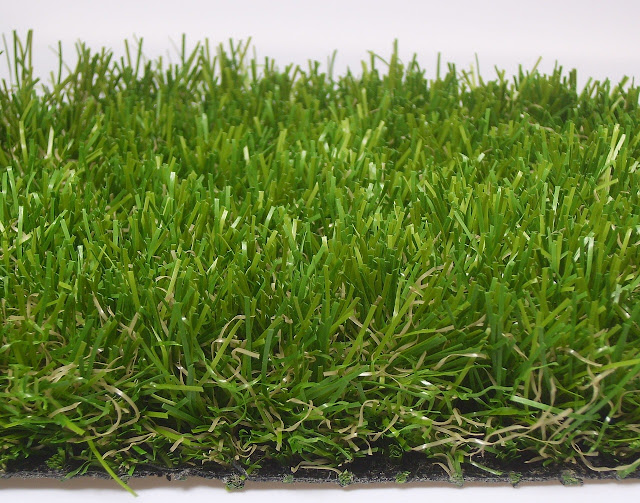The Green Revolution Artificial Grass for Backyard
The hunt for a perfect field has been a dateless pursuit for homeowners around the world. While natural lawn has long been the go- to choice, an increasingly popular and eco-friendly volition has surfaced – artificial lawn. With remarkable advancements in technology and aesthetics, artificial turf has become a feasible option for those seeking a lush, low- conservation, and sustainable grass for backyard. Through this post, we explore the benefits, installation process, and environmental advantages of using artificial turf for your field or backyard.
 |
| Artificial turf |
The Rise of Artificial Grass
Artificial grass, also known as synthetic turf or fake lawn, has experienced significant advancements since its commencement. Firstly developed for sports fields, the technology behind artificial turf has evolved to mimic the appearance and sense of natural lawn remarkably. Today, the ultramodern artificial grass looks so realistic that it's challenging to distinguish it from its natural counterpart at first glance. This metamorphosis has made it a popular choice for home landscapes, commercial areas, and also public spaces.
Advantages of Artificial Grass for Field
1. Low conservation
One of the primary reasons homeowners are drawn to artificial grass is its minimum keep conditions. Unlike natural lawn, it doesn't need mowing, watering, or fertilizing. Say farewell to spending your weekends pushing a lawnmower or dealing with dead patches due to lack of sun or over watering. Artificial lawn stays green and lush all time round, taking only occasional irrigating to remove debris.
You might also like : Homemade Dog Urine Neutralizer for a Beautiful Backyard Lawn
2. Water Conservation
Today more people are aware of water deficiency and the environmental impact of inordinate water usage. Artificial lawn offers an eco-friendly result. Natural lawn demands riotous quantities of water to remain healthy, especially during dry spells or in dry regions. By concluding for synthetic turf, homeowners can significantly reduce their water consumption and contribute to water conservation attempts.
3. Aesthetic Appeal
As mentioned previously, ultramodern artificial lawn is designed to replicate the look and sense of real lawn. Its realistic appearance enhances the aesthetic appeal of any landscape, furnishing an evergreen and manicured look throughout the seasons.
 |
| Artificial grass look realistic |
4. Continuity and Durability
High- quality artificial grass is created to withhold heavy foot traffic, making it an ideal option for families with children and pets. It's resistant to various environmental factors, including extreme rainfall conditions. When well maintained, artificial grass can last up to 15- 20 years, making it a cost-effective investment over time.
You might also like : Campgrounds in Massachusetts with lakes
5. Safe and Allergy-Free
Natural lawn can spark allergies for some people due to pollen and other allergens. Artificial lawn eliminates this issue, furnishing a safe and allergy-free appearance for children and pets to have fun.
Installation Process
The installation of artificial lawn is a scrupulous process that requires professional expertise. Below is an overview of the typical installation steps
1. Site Preparation
The existing grass is removed, and the area is cleared of any debris and foliage. The ground is leveled to ensure a smooth and even surface.
You might also like : Create Useful and Aesthetic DIY Herb Drying Rack for Your Kitchen
2. Base Installation
A stable base subcaste of crushed gravestone or beach is installed and compacted to give proper drainage and a solid foundation for the artificial turf.
3. Weed Barrier
A geotextile weed hedge is applied to prevent weed growth from underneath the artificial lawn.
4. Artificial Lawn Installation
The artificial grass is precisely rolled out and cut to fit the field area. Proper seams and edging are installed to ensure a flawless and neat appearance.
5. Infill Material
Infill material, generally made from silica sand or rubber grains, is unevenly spread across the surface to increase stability, adaptability, and support for the artificial turf filaments.
6. Grooming and Brushing
The lawn is brushed to lift the fibers and produce a natural appearance. Grooming also helps distribute the infill material unevenly.
You might also like : Indoor Plants for Toddlers to Grow
7. Final Check
The installation team conducts a final check to make sure that the field looks indefectible and is ready for use.
Conclusion
Artificial grass has become a game- changer for homeowners seeking a low-maintenance, aesthetically pleasing, and sustainable field option. With water conservation, continuity, and long- term cost savings among its numerous benefits, synthetic turf offers a beneficial alternative instead of traditional natural lawn especially in the backyard. As technology continues to advance, artificial lawn will probably become more realistic and environmentally friendly, further solidifying.
0 Response to "The Green Revolution Artificial Grass for Backyard "
Post a Comment